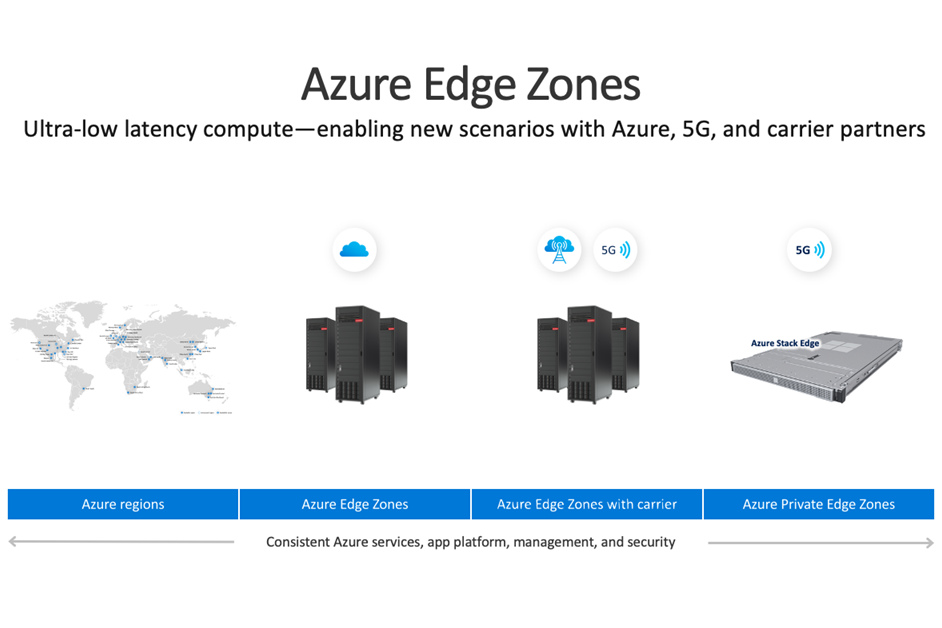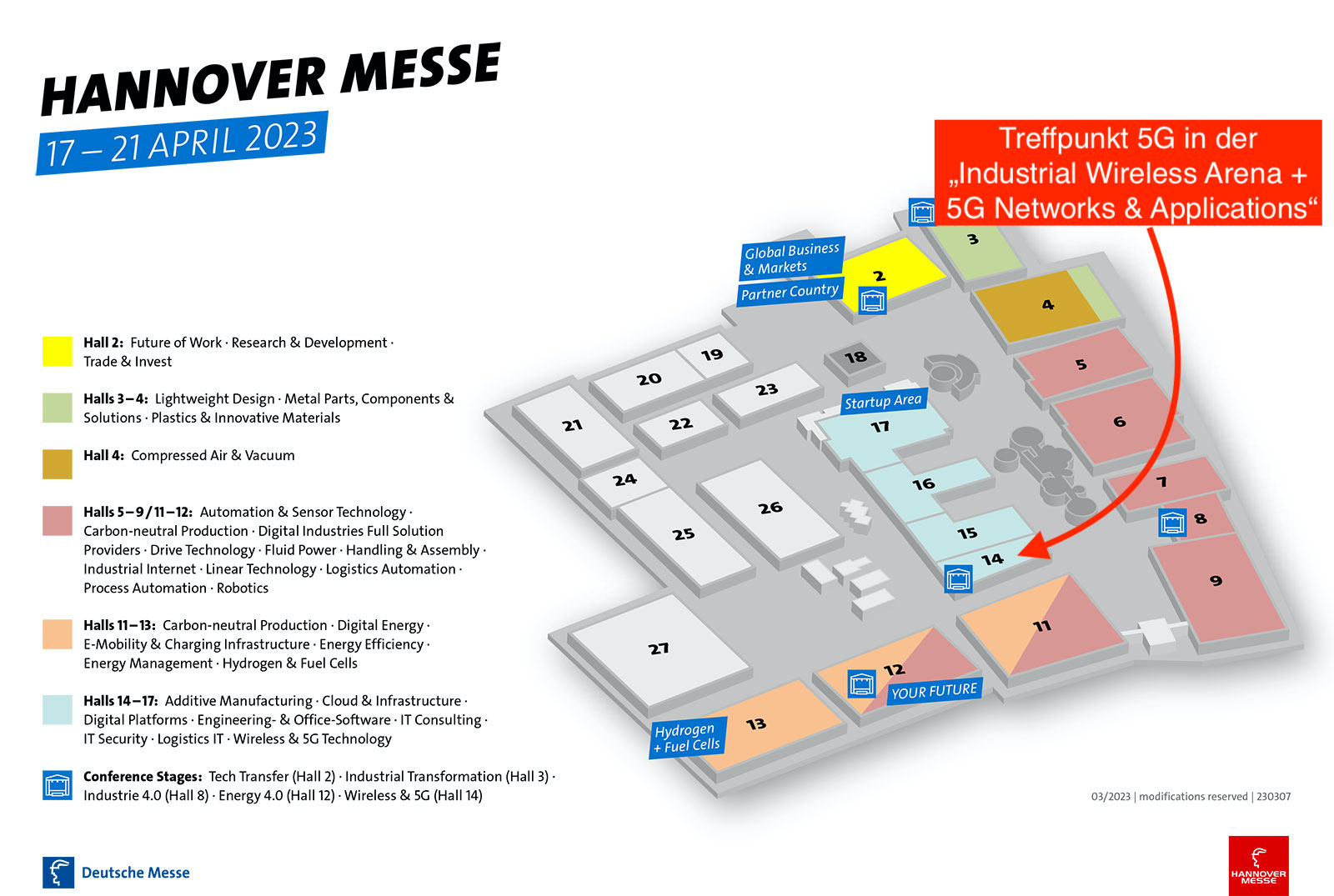Ultra-low latency computing enables new scenarios with Azure, 5G and carrier partners. (Image: Microsoft)
The development of fast 5G mobile communications is progressing rapidly and cloud solutions are benefiting: Microsoft recently announced the preview of Azure Edge Zones. The new service combines 5G technology and solutions from network operators and equipment suppliers with the manufacturer’s cloud computing platform. This results in new deployment scenarios for user who require fast data processing.
The terms Azure Edge Zones or Azure Private Edge Zones refer to cloud solutions from the manufacturer Microsoft that offer a wide range of services. Programs or apps can run here and use storage space flexibly. The use of 5G now enables new scenarios: Developers can also install distributed programs in the cloud, on premise and on an application, using the same portal, API, development and security tools. Another scenario is local computing for latency-critical industrial IoT and media services. Applications of IoT, artificial intelligence (AI) and real-time analysis can also be optimized and operated, for example in the fields of robotics, automation or mixed reality.
Applications with high requirements benefit
Especially developers working with high-resolution graphics and real-time operations, challenges known from gaming, could benefit from combining 5G with the cloud, according to Microsoft. The result is an evolving platform that combines many different virtual networking capabilities, including 5G software and SD-WAN, with firewalls from technology partners such as Affirmed, Mavenir, Nokia’s Nuage Networks, Metaswitch, Palo Alto Networks and VMware’s VeloCloud.
“Fast and intelligent mobile networks will be increasingly central to all of our lives.”
Anne Chow, CEO AT&T Business, cooperation partner of Microsoft for 5G and Cloud
Azure Edge Zones will be available in three versions:
- Azure Edge Zones provides end-to-end Azure services, an app platform and management to the edge to enable new 5G applications.
- Azure Edge Zones with carriers enables Azure services to connect directly to 5G via the network operators’ data centres. This enables developers to create optimized and scalable applications with Azure that connect directly to 5G networks, taking advantage of the end-to-end Azure APIs and tools available in the public cloud.
- Azure Private Edge Zones provides users with a private 5G/LTE network in combination with the managed Azure appliance Azure Stack Edge. This enables edge applications with extremely low latency, high security and high bandwidth for data transfer.
For detailed information about Azure Edge Zones and Microsoft’s collaboration with 5G network operators, visit the blog post “Microsoft partners with the industry to unlock new 5G scenarios with Azure Edge Zones” by Yousef Khalidi, Corporate Vice President, Azure Networking.








Leave A Comment